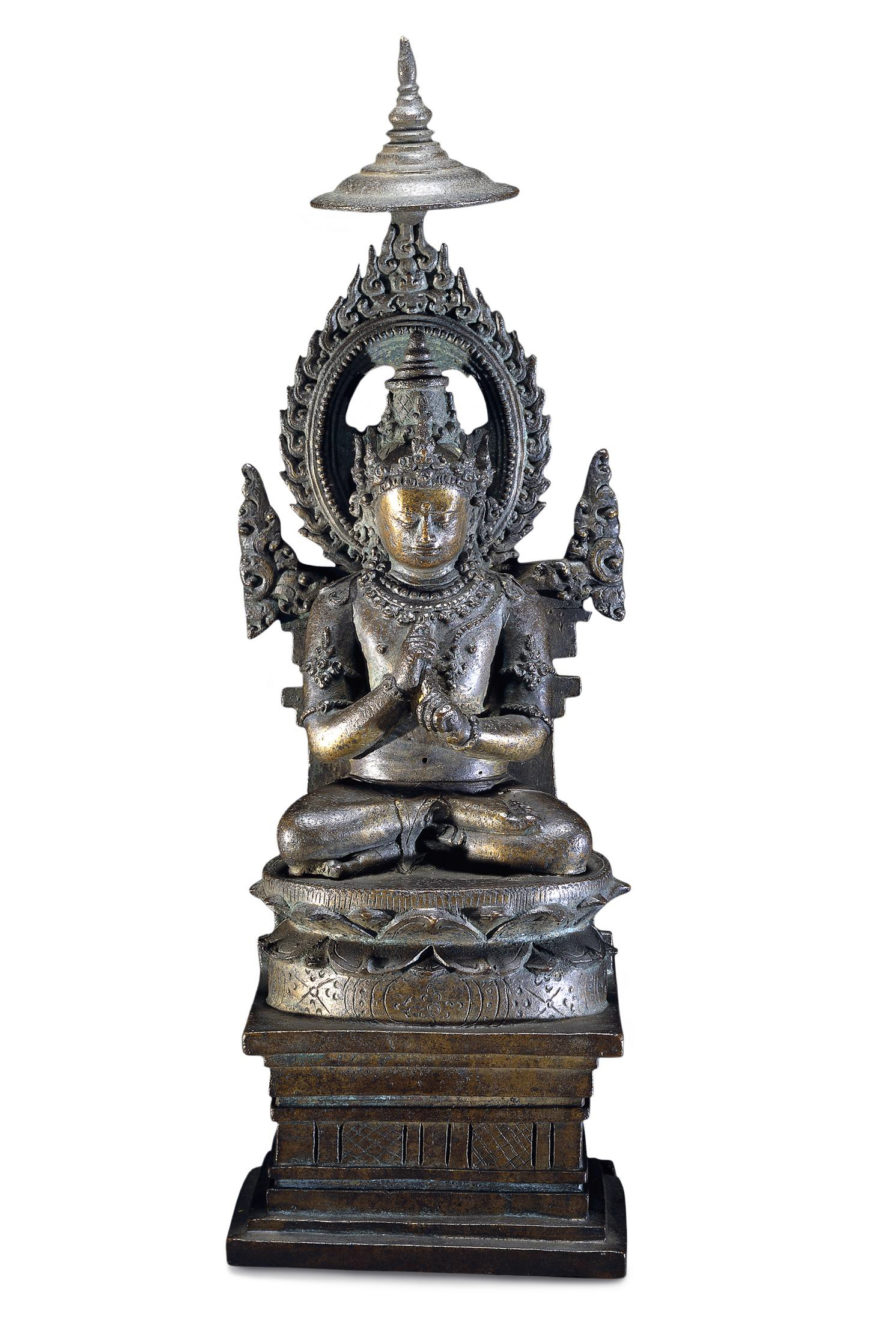
Buddha Vairocana, 10th century, cast bronze, found in Kedu, Java, Indonesia, 29 x 9.7 cm (© Trustees of the British Museum)
Buddhism reached Indonesia by about the fifth century C.E., when the Mahayana and Vajrayana or Tantric schools of Buddhism were predominant. In the eighth and ninth centuries the main centers of activity were in central Java. The great Buddhist monument at Borobudur was built around 800, both a huge stupa and a mandala.
In Vajrayana Buddhism, the five Cosmic Buddhas are identified by a particular gesture (mudra) and preside over one of the directions of space. The Buddha Vairocana is the guardian of the center and is identified by the gesture of teaching or the ‘Turning of the Wheel of Law’ (dharmacakramudra). In many Vajrayana Buddhist temples in Java the five Buddhas are arranged in a mandala with Vairocana at the center.
Vairocana sits on a high throne and a double lotus. His hands are in the gesture of teaching. Behind him is an elaborate throne-back with a halo of flames and a royal parasol. This image is similar to many of the Buddhist bronzes of eastern India. Buddhists travelled between the monasteries of eastern India and the countries of South-east Asia. Many bronzes of eastern Indian manufacture were taken to Indonesia but this image was locally made.
© Trustees of the British Museum

